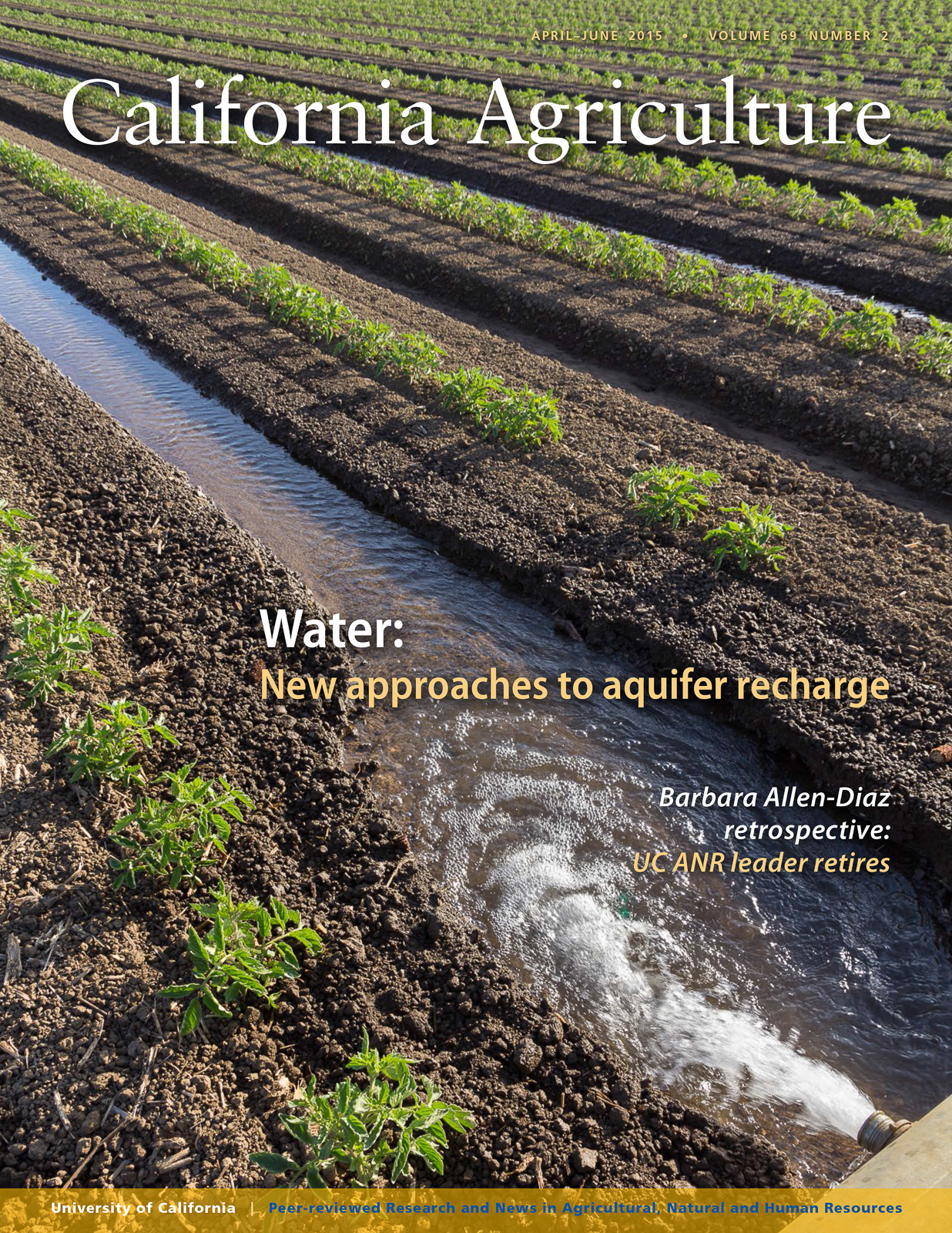All Issues

A field of tomatoes is irrigated with groundwater at the Russell Ranch Sustainable Agriculture Facility near UC Davis. California’s prolonged drought is driving major increases in groundwater extraction in the state’s agriculture regions. UC researchers are investigating new ways to recharge aquifers (page 75). Photo by Will Suckow.
Volume 69, Number 2





